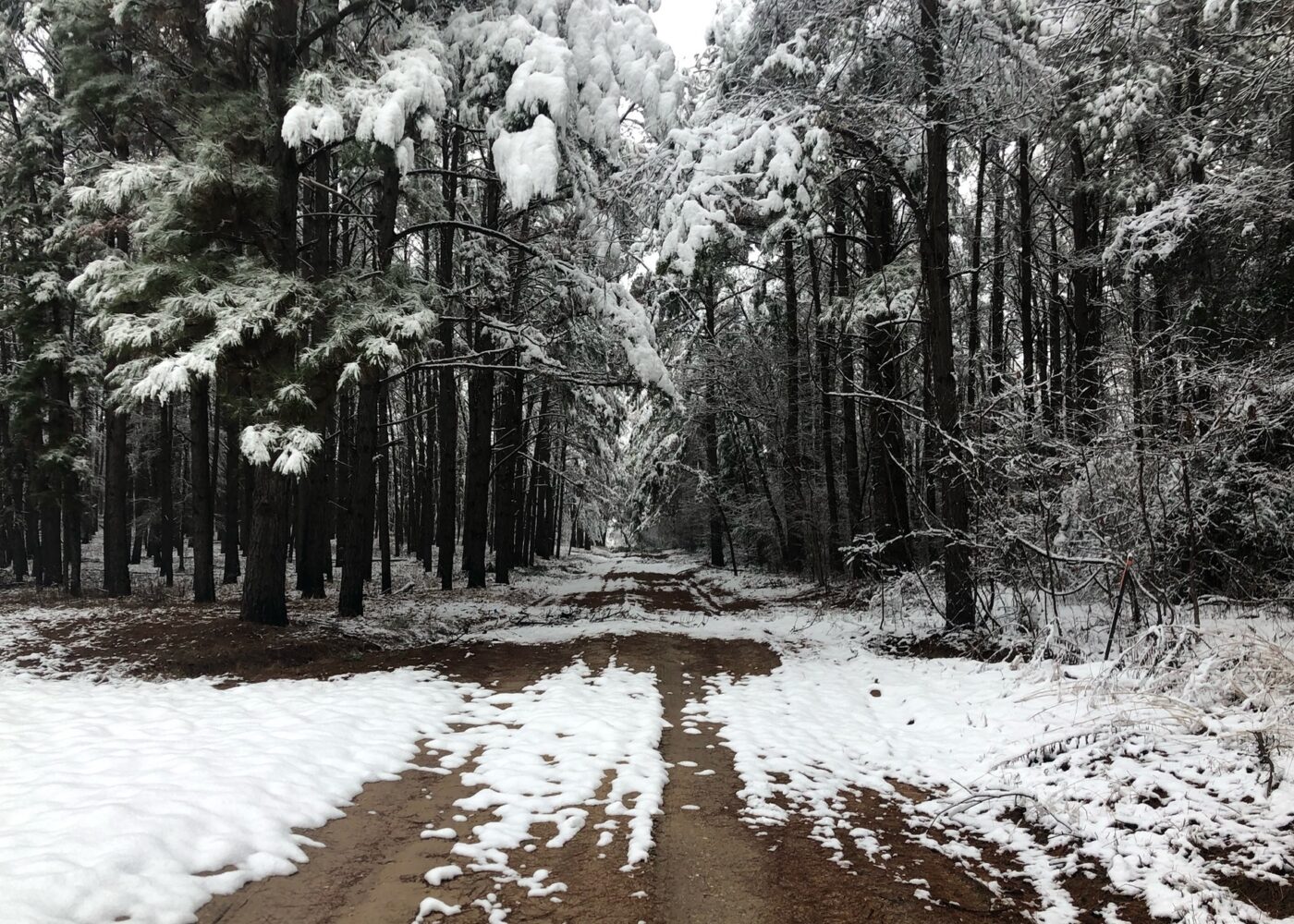Young and newly planted trees need particular care and attention to increase their chance of survival. Especially in the cold.
Though Texas is not known for harsh winters, the winter season can still be tough on trees as evidenced by Winter Storm Uri in February 2021. Harsh conditions like cold winds, bright sun, bitter ice, snow and frost can be damaging and add stress to trees.
Protect young or newly planted trees from winter damage
Watering
Newly planted trees don’t have extensive, well-established root systems, meaning they are usually shallower and not able to use soil moisture as effectively as more mature, healthy trees.
Water helps insulate both the tree and the soil. Moist soil will be warmer, and a well-watered tree will be less susceptible to freeze damage. If a hard freeze is forecasted and soil moisture is low, it is best to water the tree before freezing temperatures occur.
Recommended watering schedules vary by region but, in general, should be followed through October and early November. For hardwood species that go dormant, watering can be reduced to once or twice per month, depending on rainfall, in winter months. Watering should be done early in the day, so the tree has time to absorb it before the drop in nighttime temperature.
Mulching
Mulch is a simple and inexpensive way to winterize a young or newly planted tree. In addition to providing a barrier of protection against wind, freezing temperatures, and frost, mulching helps trees retain heat from the soil.
Repeated freezing and thawing of the soil can cause soil to expand and contract, which in turn can cause root damage. Mulch acts as an insulator preventing cold air from penetrating the root zone of newly planted trees and keeping soil temperatures higher, which helps to keep the trees warmer during the winter.
A two- to three-inch layer of mulch should be spread around the base of the tree, at least the width of the root ball on a newly planted tree taking care to keep the mulch about two inches away from the tree’s trunk.
Wrapping
The sun can be quite damaging to a young or thin-barked tree on a cold winter day by heating up the tree’s bark, stimulating activity. When this happens and then passing clouds drift by, blocking the sun, bark temperature can drop rapidly, damaging or killing that active tissue. The resulting damage is called sunscald.
Sunscald can be avoided in these vulnerable trees by wrapping the trunk for winter protection. Wrap the bark of susceptible trees in late fall with either tree wrap tape, plastic tree guards or similar light-colored material. These can be found in garden stores.
Remove the wrap in the spring after the last frost to avoid insects living under the material during the summer.
Pruning
Winter, or the dormant season, is the best time to prune trees. Especially young or newly planted trees that may require some pruning to train growth away from conflicts.
Most light pruning or pruning that removes dead, damaged, weak or diseased limbs can be done at any time during the year with little effect on the tree, but if live tissue is to be removed it is best to wait until mid- to late winter.
Generally, wound closure is maximized if pruning takes place before the flush of spring growth. Heavy pruning of live tissue just after the spring flush should be avoided, especially on weak or stressed trees.
Ice damage and oak wilt
If your oak trees are damaged in a winter storm, keep in mind protecting them from oak wilt.
While painting fresh wounds on oak trees is important to prevent the spread of oak wilt, wounds that were caused by the ice storm are no longer fresh. In cold conditions, trees quickly stop exuding sap and sap-feeding beetles are not active, so it is unlikely that oak wilt will spread as a result of an initial ice storm event.
Prune safely within your ability and DO NOT remove limbs on or near power lines. For work you cannot complete safely or that is beyond your ability, find a Certified arborist. Be sure to immediately paint any new wounds on oak trees that are created during cleanup using wound dressing or latex paint.
Immediately means make one cut then paint it before making the next cut. Clean all pruning tools with a 10% bleach solution or Lysol ™ before pruning a different tree.
Additional cosmetic pruning of oaks should be delayed until summer, once the threat of oak wilt spread has diminished. Avoid pruning oaks from February through June. Any trees that are not oaks can be pruned at any time and painting the wounds is not necessary.
When disposing of debris, burning should be delayed until spring green-up when wildfire danger is reduced. If debris must be disposed of immediately, a chipper is recommended Prevent Wildfire.
Most live oaks, and many other trees that currently have leaves, may also have suffered freeze damage. However, it is difficult to determine the true extent of this damage until after spring green-up. Trees are quite resilient and the damage may not be as bad is it initially seems.
So be patient, prune selectively and be sure to paint any fresh wounds on all oak trees.
